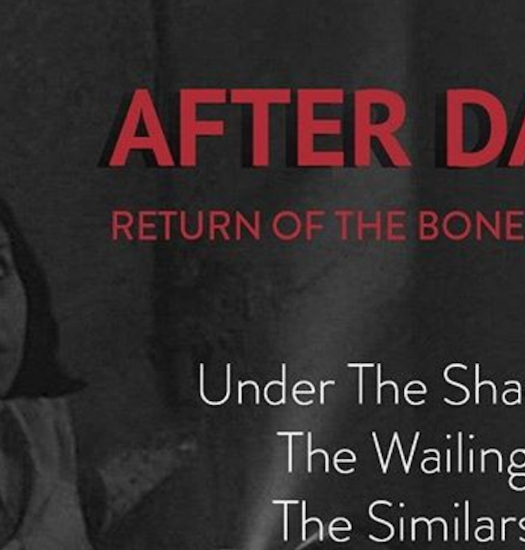Vees Mhanje Vees – Bringing rural education in the spotlight
NFDC India’s latest Marathi language feature, Vees Mhanje Vees, is set against the backdrop of a Maharashtrian village where a city-bred girl returns to her native village to re-open the school that her ailing father had started. The film directed by ad filmmaker turned debutant writer-director Uday Bhandarkar features actress Mrunmayee Godbole in the lead role.
Ahead of the release of the film, Pandolin interacted with Uday to learn more about the genesis of the idea and his thoughts on the rise of Marathi cinema. In the later half of the interview, Mrunmayee shares interesting details from her preparation to interact with so many kids on the sets to her personal connections with the film.

Uday Bhandarkar
Do you remember the time when you thought of becoming a director?
I have been in advertising for a long time now. After doing 30-40 second ads, I got an opportunity to work on slightly longer length films. That encouraged me to go further. It was around 2005-06, when I thought of doing feature films. That’s how it all started.
READ: VEES MHANJE VEES GAVE AVINASH ARUN THE LEAD ACTOR FOR KILLA
How did the idea of Vees Mhanje Vees come to you?
I wanted to do a film which clicks. I wouldn’t exactly call it a ‘thinking’ film. I was looking for a subject that pushes me to write a script. I ended up seeing a lot of Iranian films which had wonderful scripts and beautiful performances. I was looking at a script which predominantly had a cast of students. I came across a couple of newspaper articles about rural children who don’t have much of an opportunity to study. Working with kids and a subject like education, it was a perfect match. We went on to write a story about a rural school. In rural areas, there aren’t too many schools available and if there are, they are very many miles away from where they should be. The opportunity to educate children in rural areas is a difficult task. I thought of coupling my ambition of working with kids and education as a backdrop.
We also came across a story, which said that many of the schools in Maharashtra are going to shut down because the numbers didn’t meet the figure of twenty. The question was how did the authorities come up with a figure of twenty and not fifteen or ten or any other number. We started developing a story around what happens if the school does not match the figure of twenty and what happens to the ones who want to continue studying. So, combining all these thoughts, I got down to writing a story, which I thought would be interesting enough for the audience to enjoy.
Was there a personal connect to the story?
I wanted my first film to be based around kids. Also, I used to do a lot of hiking and mountaineering and have done more than seventy hikes in Maharashtra. Every time I went to the villages, I used to interact with kids. They were pretty intelligent, considering the environment they were living in and they aren’t getting any opportunity to further realize their potential. It was quite a sad situation. I tried putting all my experiences together in to a film that I’d love to make.

Vees Mhanje Vees Poster
How did you go about the casting?
Casting was pretty tough because it’s not out – and – out commercial cinema plus the budget was very tight. We were looking for people who were fired up about the idea, like us. Fortunately, whoever we approached, agreed to do the film. We auditioned about 200 odd kids and picked up kids from Mumbai and Pune. We were fortunate that the kids that we chose were good actors and had done a couple of television shows. They were quite aware of what they were signing up for. I felt a little bad for the kids who wanted to be a part of the film but we couldn’t accommodate them.
How did NFDC happen to associate with the project? And how has it given the film an impetus?
I had a detailed storyline with which I was trying to convince people to produce the film. But it wasn’t palatable to a lot of producers because it didn’t have any commercial elements. A friend of mine told me that NFDC was looking for some new projects and I should try and give it a shot. I developed the detailed storyline into a screenplay according to the requirement of NFDC. I submitted the script to them and forgot about it. It was a shot I took in the dark and 6-7 months later, I was sent a letter saying that they would like to start the production. It came as a surprise and that’s how I made the film.
With NFDC, it was a mutually beneficial relationship that I was seeing and it went on becoming better and better. There was absolutely no interference on the creative front, neither on the production front. Things fell into place quite easily. It turned out to be a very good experience and I hope NFDC feels the same about it.
READ: NDFC RELEAES TRAILER OF MARATHI FILM VEES MHANJE VEES
Marathi cinema has recently seen a rise in subjects with a universal connect and popularity. Is the industry undergoing a change? And what has brought about this change?
Marathi cinema has always been very content – driven in cinema as well as theatre. I personally felt that it was time the content from theatre happens to cinema and once that started happening, the quality of cinema today has become totally content – based. We still don’t have the star system and stars dominating the box-office, unlike Bollywood. If we talk about the Renaissance period of Marathi cinema, Kaksparsh was the first film, where Sachin Khedekar did an outstanding job. It was a deep-rooted Marathi ethos film and that’s where the upsurge of Marathi cinema started. I think Marathi cinema should stick to content-driven cinema for few more years because people want to watch these films.
Mrunmayee Godbole

Mrunmayee Godbole
Can you throw some light on the role you are playing?
I play the role of Shailaja who is a city-based girl studying engineering. Her father is a teacher who takes early retirement from work to go to his native village to start a school. But the school has problems in surviving, for several reasons. So, Shailaja decides to go to the village and keep the school functioning. She is a city girl so she doesn’t know what she has signed up for. Once she comes to the village, she realizes what a difficult task she has taken upon herself. The biggest challenge to keep the school running is to get 20 students before the next inspection is due.
What drew you to this film?
Honestly, there is nothing that won’t drive any actor to this role. The role has a great length and you get to live the film. The character has a graph from the first scene to the last scene and at the same time it’s such a strong character. The innocence that this character has is very close to my lack of knowledge about schools in villages. The director Uday Bhandarkar and the crew had planned the shoot in such a way that it was more or less in a chronological manner. With Shailaja, I got to know and experience every problem. In a way, I felt like a superhero; solving problems, getting things together.

Still from Vees Mhanje Vees
What kind of preparation did you do, especially when you had to interact with so many kids on the sets?
Since we were shooting chronologically, I got to interact with kids almost one by one. And what I learnt was that you can’t lie or fake in front of kids. You really have to be in it to gain their confidence or get that rapport going with the kids. I didn’t try to boss over them or be their fake teacher. I became a kid with them. You really have to go to their level to understand them and deal with them. For example, they would be hitting me, punching me, climbing on to me and I would do the same to them. That’s how we broke the ice. So, it came to a point that the kids would listen only to me. Because for them, I had become their teacher. I used to be on set all the time and besides the ADs giving them instructions, I would also be physically present and interact with them.
READ: HOW INDIAN ACTORS GO THE EXTRA MILE PREPARING FOR THEIR ROLES
How was it working with Uday?
It has been a wonderful experience because from day one, we were on the same page as far as the character and role was concerned. It could get really difficult if the director wants something else and I am doing something else. Specially, in a role like this. He always had very specific ideas in mind and explained it in such a way that you don’t stray from what the point of the scene is; that made it really easy for me to take the character forward and do my scene. He gave me a lot of freedom to try different things and give things my own logic.
Any memorable incident you’d like to talk about from the movie?
There is one incident that will stay with me forever. In the climax scene, I break down in the classroom, with all the kids present there. We did that shot a couple of times. By the second and third take, without any reason, the kids also started crying with me. That was completely unplanned. It was really sweet and very touching.



